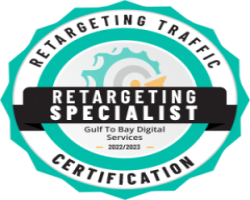Instagram Statistics That eCommerce Businesses Need to Track
Discover key Instagram statistics eCommerce businesses must track for success. Learn why these metrics matter and how to leverage them effectively.

In the world of eCommerce, staying ahead of the curve is crucial. As one of the fastest-growing social media platforms, Instagram offers a wealth of opportunities for eCommerce businesses. However, to leverage its full potential, it's essential to track key statistics and metrics. In this blog post, we'll delve into the Instagram statistics that eCommerce businesses need to monitor closely to drive growth, engagement, and sales.
Follower Growth Rate
Tracking your follower growth rate on Instagram provides valuable insights into the effectiveness of your content strategy and marketing efforts. A steady increase in followers indicates that your content resonates with your target audience, while a decline may signal the need to reassess your approach.
Engagement Rate
Engagement rate, measured by likes, comments, and shares, is a critical metric for assessing the level of interaction your posts receive. High engagement indicates that your content is compelling and resonates with your audience, while low engagement may indicate a need for improvement in content quality or targeting.
Reach and Impressions
Understanding the reach and impressions of your Instagram posts is essential for gauging their effectiveness in reaching your target audience. Reach measures the number of unique accounts that have seen your content, while impressions represent the total number of times your content has been displayed. Monitoring these metrics helps you fine-tune your content strategy to maximize visibility and engagement.
Website Traffic and Conversions
Instagram offers several tools, such as shoppable posts and swipe-up links in stories, that enable eCommerce businesses to drive traffic to their websites and track conversions. Monitoring the amount of website traffic originating from Instagram and the resulting conversions provides valuable insights into the platform's ROI and helps optimize your marketing efforts for better results.
Shopping Insights
For eCommerce businesses, tracking shopping insights on Instagram is crucial for understanding customer behavior and preferences. This includes metrics such as product views, adds to cart, and purchases directly from the platform. By analyzing these insights, businesses can identify popular products, optimize their product listings, and tailor their marketing strategies to drive sales.
Hashtag Performance
Hashtags play a vital role in increasing the discoverability of your Instagram posts and reaching a broader audience. Monitoring the performance of your hashtags, including the number of impressions and engagement generated, helps you identify which ones are most effective in driving visibility and engagement for your brand.
Audience Demographics
Understanding the demographics of your Instagram audience, including age, gender, location, and interests, allows eCommerce businesses to create more targeted and personalized content. By analyzing these insights, businesses can tailor their marketing messages to resonate with their target demographic and drive engagement and sales.
Instagram Stories Metrics
With the rise of Instagram Stories, monitoring metrics such as views, taps forward, taps back, and exits is essential for evaluating the performance of your ephemeral content. Tracking these metrics helps you understand how users are engaging with your stories and optimize your content strategy accordingly.
Influencer Collaboration Impact
Many eCommerce businesses collaborate with influencers on Instagram to reach new audiences and drive sales. Tracking metrics such as reach, engagement, and conversions resulting from influencer partnerships helps businesses assess the effectiveness of these collaborations and make informed decisions about future partnerships.
Competitor Analysis
Finally, keeping an eye on your competitors' Instagram performance can provide valuable insights into industry trends, best practices, and areas for improvement. By analyzing competitor metrics such as follower growth, engagement rate, and content strategy, eCommerce businesses can identify opportunities to differentiate themselves and stay ahead of the competition.
What's Your Reaction?




















